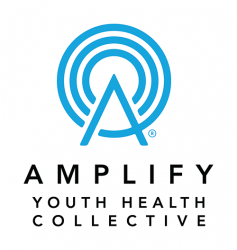Training
Barriers to Abortion Access for Michigan Minors
Unplanned pregnancies are challenging for any population, but particularly for adolescents. When dealing with issues like pregnancy and abortion, teens are often denied the tools to make informed and autonomous decisions. This training will work with participants to identify and set aside individual judgments in order to provide unbiased support to pregnant adolescents. The training will also cover mandatory parental involvement laws, judicial bypass, and how to help minors navigate the judicial bypass system.
In this training, participants will:
- Identify own biases around abortion and teen pregnancy.
- Gain an understanding of unique barriers teens face to access abortion services.
- Define and review parental involvement laws and judicial bypass.
- Define requirements for judicial bypass.
- Describe the judicial bypass process.
- Discuss findings from MOASH's Michigan Youth (MY) Rights project.
In person Online
Age Group(s) - Grades 6-8, Grades 9-10, Grades 11-12
Topic(s) - Sex education in schools, Values
Professional Learning Standards for Sex Education (PLSSE) Indicators
Sex Education In Schools Indicators - Indicator 1 (K-12): Describe three health (e.g. physical, social and/or emotional) and/or academic benefits of sex education for young people
- Indicator 2 (K-12): Describe state and/or district laws, policies, and standards that relate to sex education where one teaches.
Values Indicators - Indicator 1 (K-12): Explain the differences between personal and universal values relating to sexuality.
Training
Sexual Health Education Essentials
Sexual Health Education Essentials is a foundational training meant to prepare sexual health educators, school personnel, and other youth work professionals to support young people. Training content is data-driven and aligned with best-practices in the field of adolescent sexual health promotion. Topics covered during pre-work and live training include holistic sexuality, adolescent growth & development, reproductive health, responding to sensitive questions, values in sexual health education, consent, contraception, and more. Sexual Health Education Essentials is recommended for anyone new to the field of sexual health education or for trusted adults working with young people in any capacity who wish to gain knowledge and strengthen their skills.
In person
Cost - $150/registrant, $3,000/organization
Age Group(s) - Grades 3-5, Grades 6-8, Grades 9-10, Grades 11-12
Topic(s) - Contraception, pregnancy, and reproduction, Creating an inclusive and affirming learning environment, Disclosure, Effective teaching strategies, LGBQ+ identities, Puberty and adolescent development, Responding to challenging questions, Sexual and reproductive anatomy and physiology, Values
Professional Learning Standards for Sex Education (PLSSE) Indicators
Contraception, Pregnancy, and Reproduction Indicators - Indicator 1 (6-12): Explain fertilization, implantation, conception, and how pregnancy occurs.
- Indicator 3 (6-12): Describe the differences in mechanisms of action and access between emergency contraception and the abortion pill.
- Indicator 4 (6-12): Explain methods of contraception, including the latest medical advances that are popular among young people.
- Indicator 6 (6-12): Identify three federal and/or state laws that impact young peoples’ access to effective reproductive and sexual health care (e.g. age of consent for services, confidential access to health care services, and access to condoms)
Creating and inclusive and affirming learning environment Indicators - Indicator 1 (K-12): Demonstrate three techniques to create an inclusive and affirming learning environment. (S)
Disclosure Indicators - Indicator 1 (K-12): Describe the importance of teachers’ maintaining professional boundaries when teaching sex education.
- Indicator 2 (K-12): List three factors to consider regarding personal disclosure when teaching sex education
- Indicator 3 (K-12): Demonstrate how to reduce the impact of educators’ passive and/or active personal disclosure on the educational environment. (S)
- Indicator 4 (K-12): Explain the roles and responsibilities of a mandated reporter.
- Indicator 5 (K-12): Explain the state- and district-mandated reporting requirements and procedures.
Effective Teaching Strategies Indicators - Indicator 1 (K-12): Demonstrate the ability to build rapport with students. (S)
HIV and other sexually transmitted diseases/infections Indicators - Indicator 1 (6-12): Describe HIV and three common STDs/STIs, and how each can and cannot be transmitted.
- Indicator 2 (6-12): Explain that many STD/STIs do not cause symptoms and the only way to know if you have one is to be tested.
LGBQ+ Identities Indicators - Indicator 2 (K-12): Define sexual orientation and sexual identity, including that everyone has both.
- Indicator 3 (6-12): Explain the difference between sexual orientation, sexual behavior, and sexual identity.
- Indicator 4 (K-12): Demonstrate the use of inclusive and affirming language. (S)
Puberty and Adolescent Development Indicators - Indicator 1 (K-12): Describe how puberty prepares the human body for the potential to reproduce.
Responding to Challenging Questions Indicators - Indicator 1 (K-12): Explain three reasons why it is important to respond to every question students ask when teaching sex education.
Sexual & Reproductive Anatomy and Physiology Indicators - Indicator 2 (K-12): Demonstrate the ability to use medically accurate terms for sexual and reproductive anatomy, including all external genitals. (S)
- Indicator 3 (K-12): Explain the function of the individual sexual and reproductive body parts and how they typically work.
Transgender and Gender Expansive Identities Indicator - Indicator 2 (K-12): Demonstrate the use of inclusive and affirming language. (S)
- Indicator 3 (K-12): Define gender identity and sex assigned at birth.
- Indicator 4 (K-12): Explain how gender identity and gender expression are distinct from each other and from sexual orientation.
Values Indicators - Indicator 1 (K-12): Explain the differences between personal and universal values relating to sexuality.
- Indicator 2 (K-12): Describe how verbal and nonverbal expression of personal values, and comfort with topics related to sex education, could impact one’s teaching
- Indicator 3 (K-12): Explain the importance of educators refraining from sharing their personal values when implementing sex education.
- Indicator 4 (K-12): Demonstrate the ability to respond effectively to students’ values-based comments and questions. (S)
Training
Fat Liberation is Queer Liberation
Even within justice-oriented spaces, fatphobia, a system of oppression, is frequently normalized and ignored. Due to diet culture and body surveillance under the guise of public health, we are not often given the space to discuss liberation from fatphobia. This workshop allows the audience to reflect on how fatphobia is normalized and shows up in their lives, discuss how fatphobia is explicitly tied to every other system of oppression, and tie fat liberation to queer and trans liberation as we advocate for ourselves and our communities in the fight against fatphobia.
In this training, participants will:
- Discuss how fatphobia is normalized and how it occurs in daily life, and unlearn myths about health and thinness.
- Gain an understanding of how fatphobia is tied to all other systems of oppression and how fat liberation is connected to queer and trans liberation.
- Examine their own internalized fatphobia and identify strategies for self-advocacy and community advocacy.
- Share local and national resources on fat positivity and liberation.
In person Online
Age Group(s) - Grades K-2, Grades 3-5, Grades 6-8, Grades 9-10, Grades 11-12
Topic(s) - Conscious and unconscious bias about race, ethnicity, and culture disclosure, Creating an inclusive and affirming learning environment, LGBQ+ identities, Racial and reproductive justice, Transgender and gender expansive identities, Values
Professional Learning Standards for Sex Education (PLSSE) Indicators
Conscious and unconscious bias about race, ethnicity, and culture Indicators - Indicator 1 (K-12): Define conscious and unconscious bias and explain how they could influence one’s teaching of sex education.
Creating and inclusive and affirming learning environment Indicators - Indicator 1 (K-12): Demonstrate three techniques to create an inclusive and affirming learning environment. (S)
- Indicator 2 (K-12): Demonstrate three strategies for creating culturally responsive classrooms. (S)
LGBQ+ Identities Indicators - Indicator 4 (K-12): Demonstrate the use of inclusive and affirming language. (S)
- Indicator 6 (K-12): Explain three ways that LGBQ+ youth are at disproportionate risk for health disparities.
- Indicator 8 (K-12): Explain why it is essential to include positive portrayals of LGBQ+ people in lessons.
- Indicator 9 (K-12): Demonstrate three strategies that can be used to include positive portrayals of LGBQ+ people in lessons. (S)
Racial and Reproductive Justice Indicators - Indicator 3 (K-12): Describe three ways power, privilege, prejudice, discrimination, and stereotypes related to age, race, ethnicity, sexual orientation, gender, gender identity, socio-economic status, immigration status, and/or physical or intellectual ability can impact sexual health and reproductive justice.
- Indicator 5 (K-12): Describe three strategies educators can use to acknowledge and proactively work to mitigate the impact of bias on their students’ sexual health and multiple, intersecting identities.
Transgender and Gender Expansive Identities Indicator - Indicator 6 (K-12): Explain three ways that transgender and gender expansive youth are at disproportionate risk for health disparities.
- Indicator 8 (K-12): Explain why it is essential to include positive portrayals of transgender and gender expansive people in lessons.
- Indicator 9 (K-12): Demonstrate three strategies that can be used to make lessons affirming for transgender and gender expansive people. (S)
Values Indicators - Indicator 1 (K-12): Explain the differences between personal and universal values relating to sexuality.
- Indicator 2 (K-12): Describe how verbal and nonverbal expression of personal values, and comfort with topics related to sex education, could impact one’s teaching
Training
Creating Safer Spaces in the Classroom
Each of us has experienced some type of trauma, whether it is collective trauma- like a natural disaster- or a personal trauma- like sexual abuse. In the classroom, trauma can show up in ways that look like behavior issues and actions that require discipline. Participants will learn small changes that can make a big difference in the classroom for students who have experienced trauma.
In person Online
Cost - Please contact alexandra@gcapp.org for details
Age Group(s) - Grades K-2, Grades 3-5, Grades 6-8, Grades 9-10, Grades 11-12
Topic(s) - Creating an inclusive and affirming learning environment
Professional Learning Standards for Sex Education (PLSSE) Indicators
Creating and inclusive and affirming learning environment Indicators - Indicator 1 (K-12): Demonstrate three techniques to create an inclusive and affirming learning environment. (S)
- Indicator 3 (K-12): Describe three elements of a trauma-informed approach to sex education.
- Indicator 4 (K-12): Demonstrate three strategies of a trauma-informed approach to sex education (e.g. giving trigger warnings before content on sexual assault and allowing students the right to pass as appropriate, etc.). (S)
Training
Understanding Pregnancy Options
During this session, participants will develop a basic understanding of conception and the stages of pregnancy, and learn about medical and legal details of pregnancy options including Parenting, Adoption and Abortion. They will also complete a values reflection activity designed to help them identify areas of bias or potential conflict in their discussions of pregnancy options with the community.
In person Online
Age Group(s) - Grades 6-8, Grades 9-10, Grades 11-12
Topic(s) - Contraception, pregnancy, and reproduction, Creating an inclusive and affirming learning environment, Disclosure, Effective teaching strategies, LGBQ+ identities, Responding to challenging questions, Transgender and gender expansive identities, Values
State(s) - Alabama,
Alaska,
American Samoa,
Arizona,
Arkansas,
California,
Colorado,
Connecticut,
Delaware,
District of Columbia,
Florida,
Georgia,
Guam,
Hawaii,
Idaho,
Illinois,
Indiana,
Iowa,
Kansas,
Kentucky,
Louisiana,
Maine,
Maryland,
Massachusetts,
Michigan,
Minnesota,
Mississippi,
Missouri,
Montana,
Nebraska,
Nevada,
New Hampshire,
New Jersey,
New Mexico,
New York,
North Carolina,
North Dakota,
Northern Mariana Islands,
Ohio,
Oklahoma,
Oregon,
Pennsylvania,
Puerto Rico,
Rhode Island,
South Carolina,
South Dakota,
Tennessee,
Texas,
U.S. Virgin Islands,
Utah,
Vermont,
Virginia,
Washington,
West Virginia,
Wisconsin,
Wyoming
Professional Learning Standards for Sex Education (PLSSE) Indicators
Contraception, Pregnancy, and Reproduction Indicators - Indicator 1 (6-12): Explain fertilization, implantation, conception, and how pregnancy occurs.
- Indicator 3 (6-12): Describe the differences in mechanisms of action and access between emergency contraception and the abortion pill.
- Indicator 5 (6-12): Describe pregnancy options, including parenting, adoption, and abortion.
- Indicator 6 (6-12): Identify three federal and/or state laws that impact young peoples’ access to effective reproductive and sexual health care (e.g. age of consent for services, confidential access to health care services, and access to condoms)
Creating and inclusive and affirming learning environment Indicators - Indicator 1 (K-12): Demonstrate three techniques to create an inclusive and affirming learning environment. (S)
Disclosure Indicators - Indicator 1 (K-12): Describe the importance of teachers’ maintaining professional boundaries when teaching sex education.
LGBQ+ Identities Indicators - Indicator 4 (K-12): Demonstrate the use of inclusive and affirming language. (S)
Responding to Challenging Questions Indicators - Indicator 1 (K-12): Explain three reasons why it is important to respond to every question students ask when teaching sex education.
- Indicator 2 (K-12): Demonstrate the ability to effectively respond to three different types of challenging questions. (S)
Transgender and Gender Expansive Identities Indicator - Indicator 2 (K-12): Demonstrate the use of inclusive and affirming language. (S)
Values Indicators - Indicator 1 (K-12): Explain the differences between personal and universal values relating to sexuality.
- Indicator 2 (K-12): Describe how verbal and nonverbal expression of personal values, and comfort with topics related to sex education, could impact one’s teaching
- Indicator 3 (K-12): Explain the importance of educators refraining from sharing their personal values when implementing sex education.
- Indicator 4 (K-12): Demonstrate the ability to respond effectively to students’ values-based comments and questions. (S)



